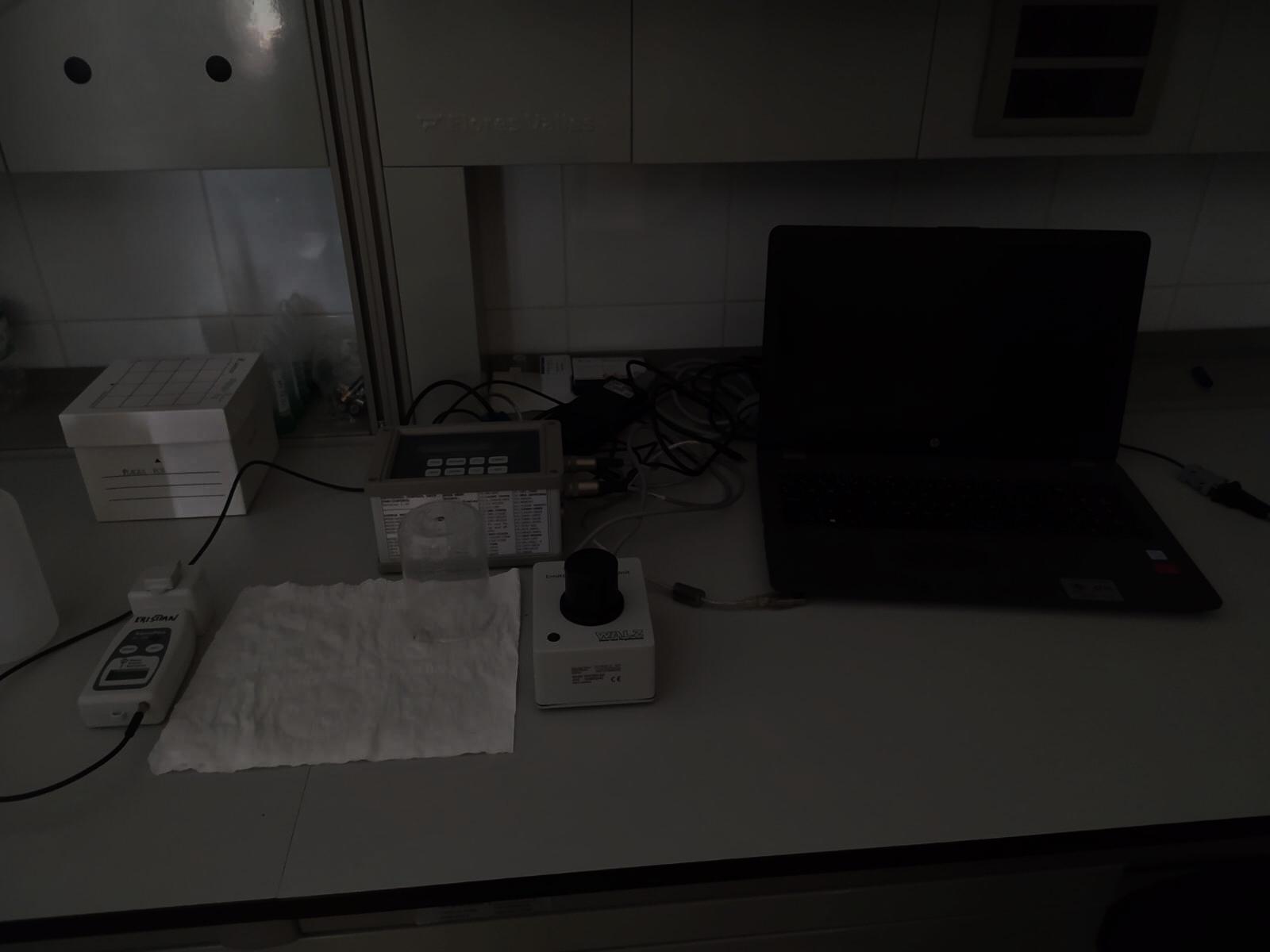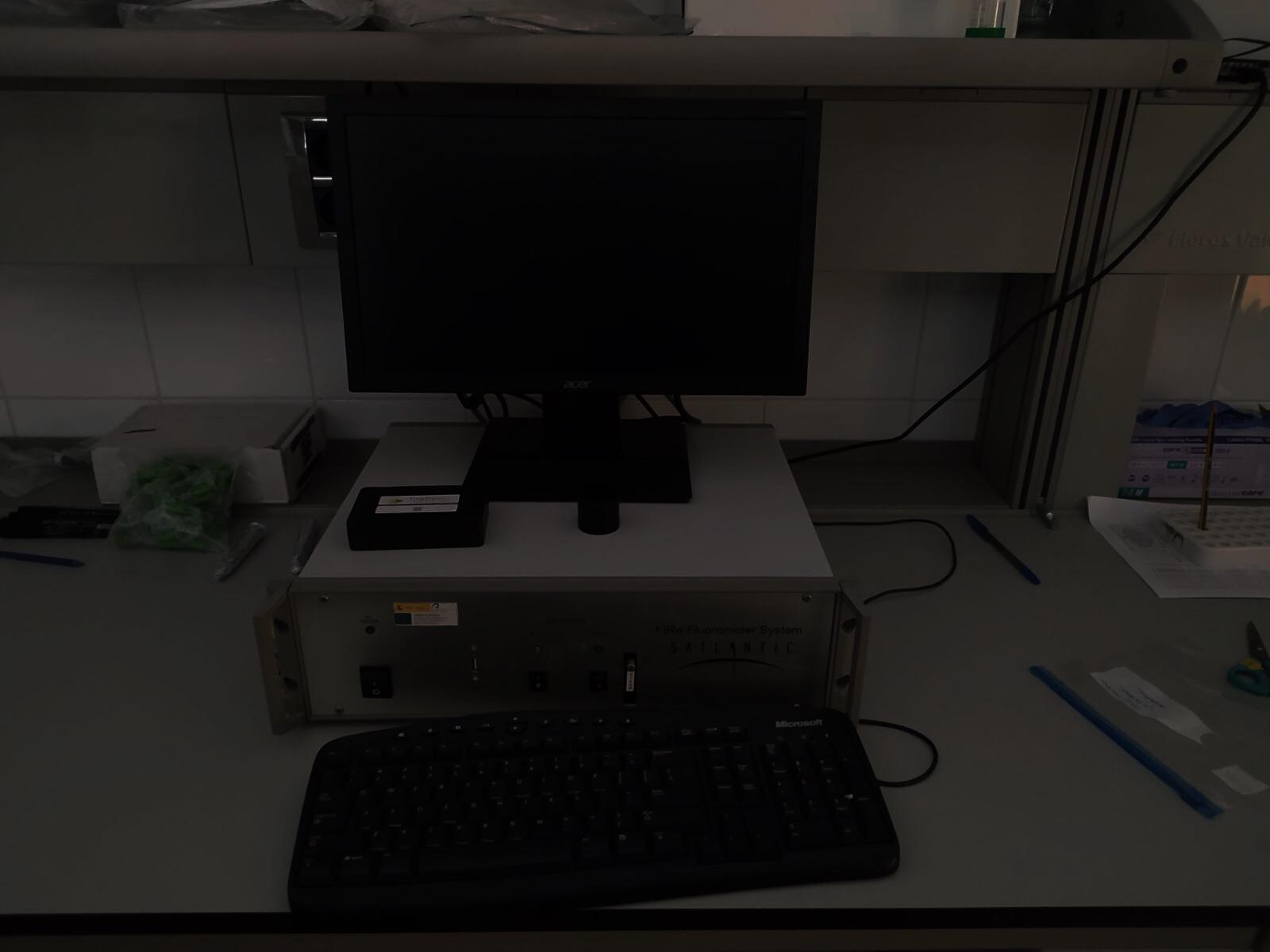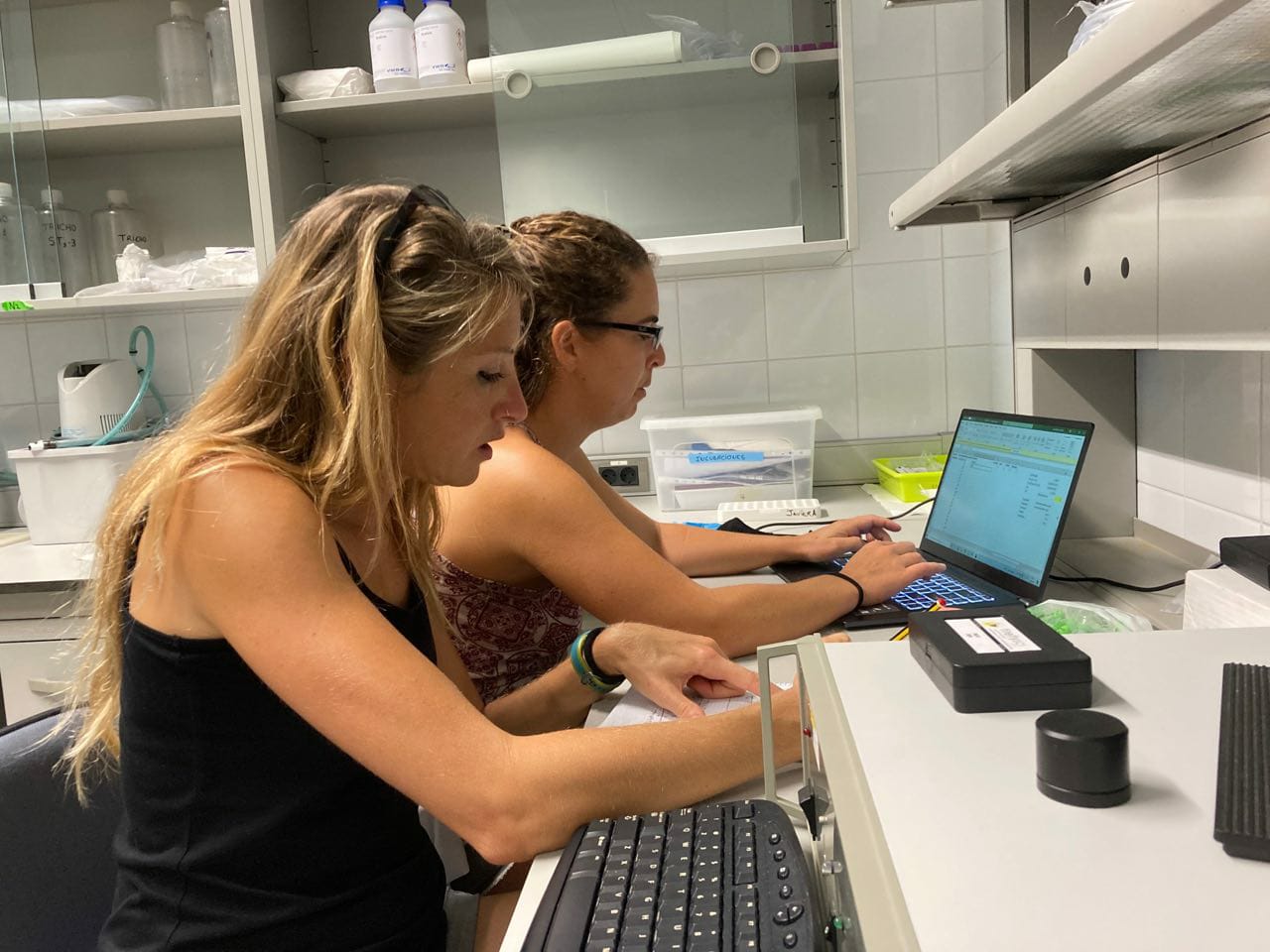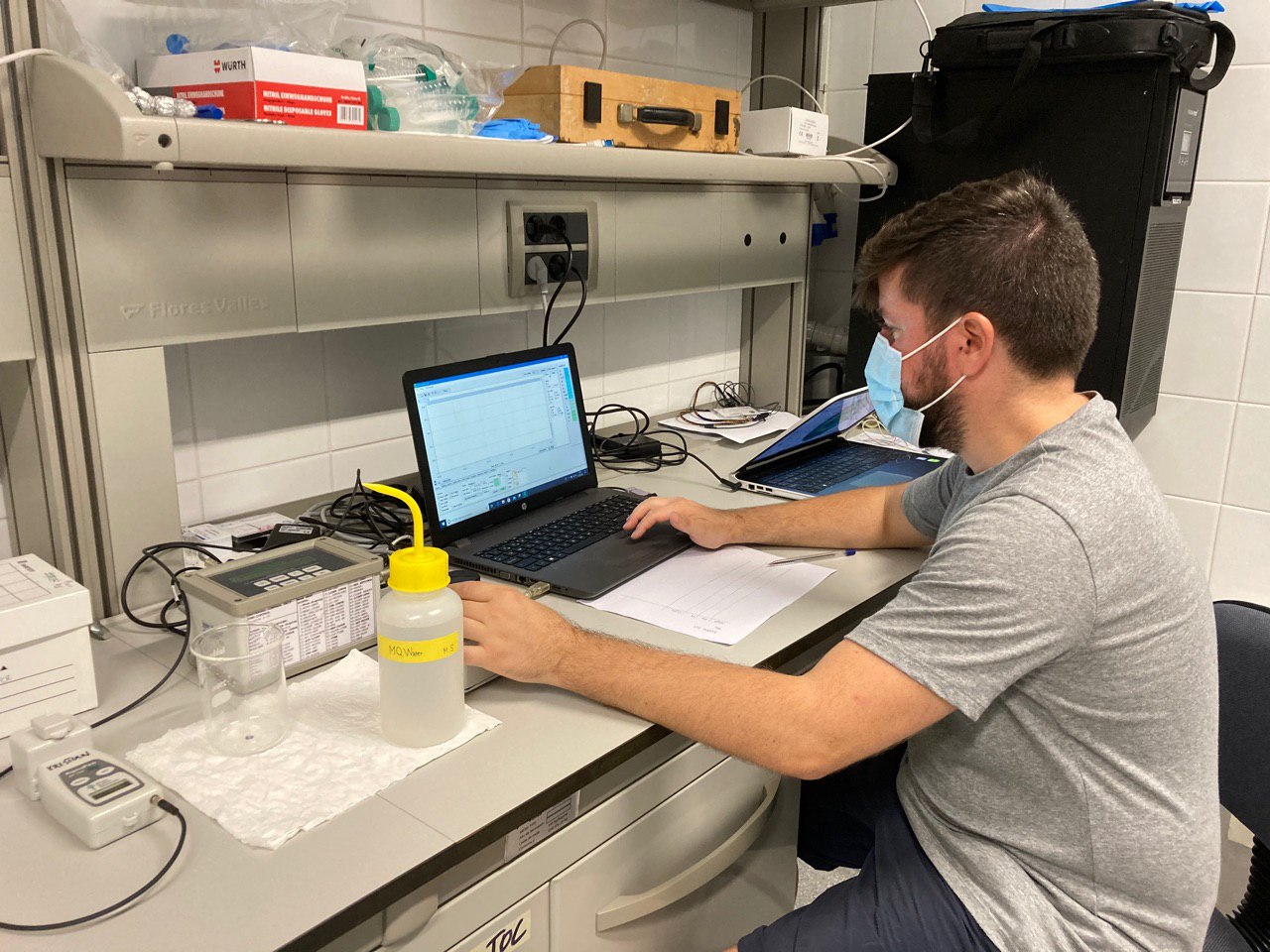Our supervisors call us the fluorescent guys because we are measuring chlorophyll-a fluorescence. And what is that? Chlorophyll-a is a crucial pigment present in photosynthetic organisms. Photosynthesis is the mechanism by which plants and algae use light to obtain energy to make food. During the photosynthesis, CO2 is sequestered from the atmosphere and converted into carbohydrates. How does this happen? During this process, light energy is converted into chemical energy by being transported through different pigments and proteins, called the electron transport chain. Here is where chlorophyll-a and other pigments such as carotenoids are essential.
By measuring chlorophyll-a fluorescence we can assess how the electron transport chain is working. This will give us information on how the photosynthetic organisms are performing, which in our case are phytoplankton (microscopic marine algae). Therefore, stressed phytoplankton will show low levels of chlorophyll-a fluorescence, and happy phytoplankton will show much higher levels.
For this experiment, we are using and comparing three different and very sensitive equipments for measuring chlorophyll-a fluorescence in order to get the most accurate one. These three equipments are the WaterPAM (Maria Segovia group, UMA, Spain), the FIRe (Javier Arístegui group, ULPGC, Spain), and the AquaPen (Kristian Spilling group, SYKE, Finland).


We have transformed our lab into a cinema to measure chlorophyll-a fluorescence. All lights are switched off to avoid any external light interference with the measurements, and room temperature is lowered to the same temperature as we have in the mesocosms. Samples are brought from the mesocosmos and prior to their measurement, samples need to be in total darkness for 30 min to ensure that all chlorophyll-a molecules are available to receive and transport electrons.
We have lots of samples. Every 10 min one sample is measured, and the next sample is put in darkness. The idea is that we have a series of measurements in which all the samples are being kept exactly the same time in darkness before being measured.


What is the outcome of these measurements? The general state of the photosynthetic machinery and, consequently, an approximation to the “photosynthetic health” of the phytoplankton.
Authors: Víctor Vázquez, Lucia Palacios, Beatriz Fernández